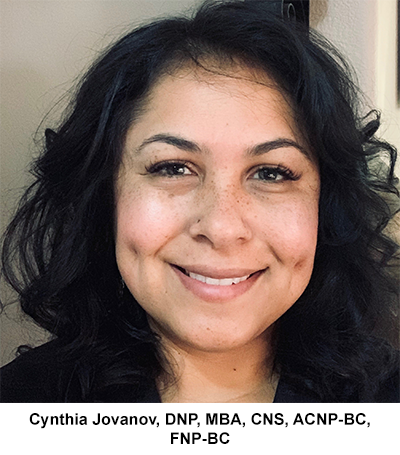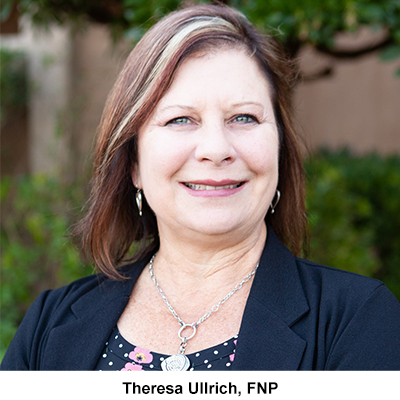By Dorsey Griffith
Contributing Writer
Nurse practitioners have been front and center in efforts to get the most vulnerable people vaccinated against COVID-19, working either as volunteers at makeshift vaccination clinics, at hospitals or in their outpatient practices. By most accounts, the chaotic vaccine rollout has presented challenges for providers and patients.

Plagued by data collection problems, confusing county vaccination protocols, shortages and storage problems, California is ranked 41st in the nation in terms of per capita vaccination, with only 54 percent of its 5.6 million doses administered as of Jan. 30, according to the Los Angeles Times tracker. Added to the distribution problems, many people who are especially vulnerable are afraid to get the vaccine, putting providers in the position of having to convince them of the vaccine’s safety and efficacy. In response to the rollout obstacles, Gov. Newsom on Jan. 27 signed an executive order to protect healthcare providers from legal liability when they participate in the vaccine administration program.
“It’s been very disappointing,” said Carla Evans, NP-BC, who works in a private cardiology practice in Santa Rosa. “The public has no idea how they are going to get a vaccination. There is not a lot of information. The state tells the county that they are in charge, but the county has to get the vaccine from the state, but the state gets it from the Feds, but the Feds don’t have as much as they said they did.”
Lending a Hand
Evans is among the many health care providers who wanted to lend a hand to get more people vaccinated, so when the Sonoma County Medical Association asked for volunteers she signed up. The first day didn’t go well; the team lacked supplies and the vaccination check-in system was not well-organized. Day two went much more smoothly; Evans’ job was to reconstitute the Pfizer vaccine and draw it into the syringe, which she quickly learned was a very precise and delicate job given the fragility of the compound.
“You can’t shake it,” she said. “You can’t let it be exposed to light. Once you thaw it, it has to be kept at certain temperature. You have 90 minutes to reconstitute it once thawed, and you have to give it all within six hours.”
Evans has offered her time to other vaccination efforts but has yet to hear whether she will be asked to show up. She figures the county has too few staff to launch mass immunization efforts efficiently, but she is hopeful.
“Let’s just get this population vaccinated so we can move on with our lives as best we can,” she said. “I have confidence people will pull it together. There are many dedicated people willing to help; they just need strong leadership and an action plan.”
Providing COVID Care and Vaccine Education

Cynthia Jovanov, DNP, MBA, CNS, ACNP-BC, FNP-BC, was pleased with the rollout of the vaccine at Eisenhower Health, the Rancho Mirage hospital where she works as an Acute Care NP. COVID-19 hit her community especially hard, and all of the hospitals in the region have been overwhelmed.
“They were very aggressive in getting everybody who is in a priority group vaccinated and have continued to roll it out,” she said.
But in her job working part time as a primary care provider in Riverside, Jovanov has seen a lot of hesitancy from patients about getting the vaccine, even as the disease rages in the local community.
“In Riverside there is sluggish rollout to get the elderly population vaccinated,” she said, adding that she has a large caseload of COVID patients. “One day at clinic, 15 of 17 patients we saw via telehealth had COVID or were post-COVID.”
Still, she said, patients often ask her if she recommends getting the vaccine. Jovanov always tells them that she had the vaccination without worrisome side effects. And she explains that COVID-19 can leave patients with long-term, even chronic, health problems.
“Some patients are young, but we don’t know what the post-infection effects may be. If you are now on oxygen and you have lung damage, are you able to go back to work six months down the road? Vaccination may be protecting you from a chronic disease.”
Mass Vaccination Under the Big Tent at Disneyland

Theresa Ullrich, FNP, was so tired of the COVID-19 deniers that she volunteered to join a vaccine trial last fall. “I thought the only way forward is having the vaccine. Why not be part of the solution?”
Fortunately, Ullrich received the actual vaccine and has felt, like other providers who have been inoculated, “superhuman.” She is the lone NP working in person at a federally qualified health clinic in Orange.
Ullrich also volunteered for a county health department vaccination program held in the Disneyland parking lot. Her role was to screen people who had responded in the affirmative to one or more questions prior to immunization.
People who reported having allergies would require additional observation after the injection; those who had had another vaccination within the past 14 days would be turned away. Anyone on an immunosuppressant drug would be warned that the vaccine may not provide as robust protection and that they would need to continue to practice strict social distancing. Those who cleared the screening were given a sticker with a picture of Mickey Mouse. Delighted, many of them then took selfies.
“It never looked chaotic from my vantage point,” she said of the event. In two days, the team vaccinated 9,000 people, most of them older adults.
Vaccine demand remains high in Orange County, and vaccine appointment slots fill up almost immediately, she said. Ullrich is ready to enlist as a volunteer for additional vaccination clinics and has applied online. But like Stevens, she has yet to be called up for another call of vaccination duty.